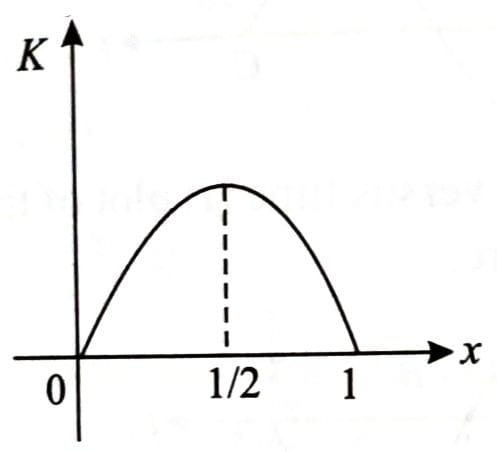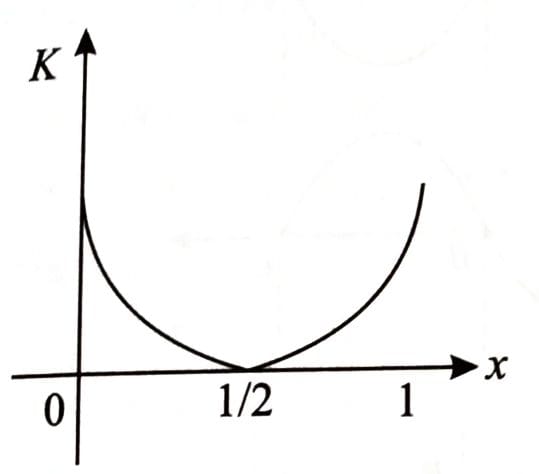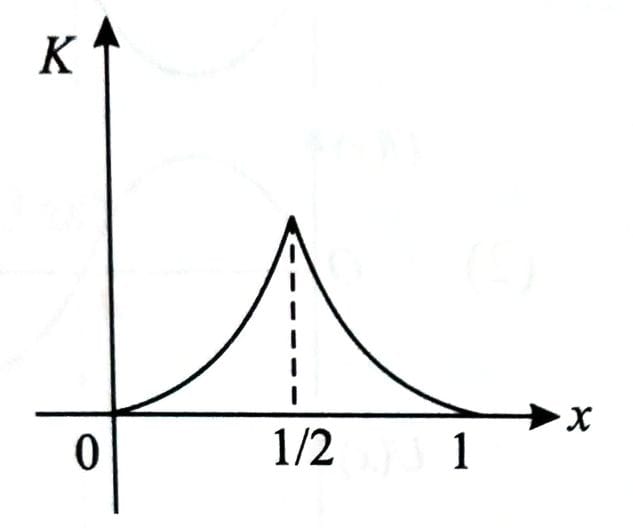Topic Question Set
Q 11
:
A particle oscillates along the x-axis according to the law, where . The kinetic energy (K) of the particle as a function of x is correctly represented by the graph. [2025]
(1)

Clearly is mean position, Particle is oscillating between
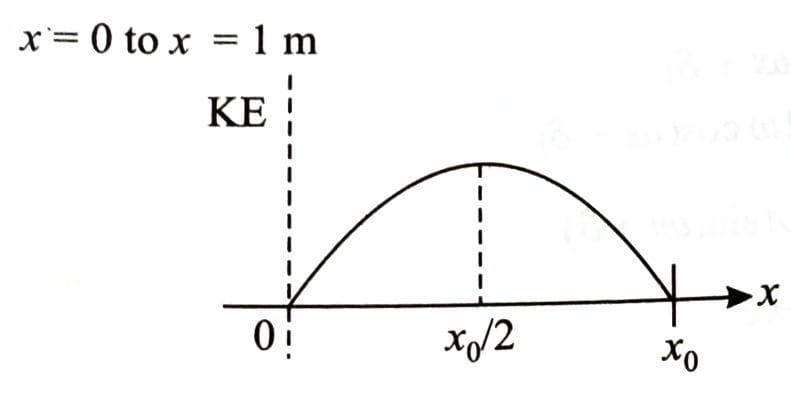
Q 12
:
Given below are two statements. One is labelled as Assertion (A) and the other is labelled as Reason (R).
Assertion (A): Knowing initial position and initial momentum is enough to determine the position and momentum at any time t for a simple harmonic motion with a given angular frequency .
Reason (R) : The amplitude and phase can be expressed in terms of and .
In the light of the above statements, choose the correct answer from the options given below: [2025]
Both (A) and (R) are true but (R) is NOT the correct explanation of (A).
(A) is false but (R) is true.
(A) is true but (R) is false.
Both (A) and (R) are true and (R) is the correct explanation of (A).
(4)
... (i)
... (ii)
(ii)/(i)
From (i),
Hence both position and linear momentum of a particle can be expressed as a function of time if we know initial momentum and position.
Q 13
:
Which of the following curves possibly represent one-dimensional motion of a particle? [2025]
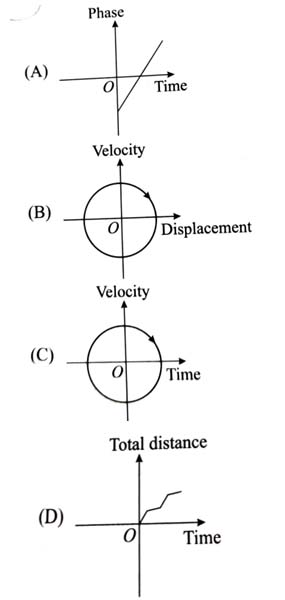
Choose the correct answer from the options given below:

A, B and D only
A, B and C only
A and B only
A, C and D only
(1)
A. Phase increase with time in SHM, = kt + C
For example, in SHM, x = A sin
Correct
B. In SHM Velocity and displacement are related in elliptical/circular relation
i.e., = constant, it can be 1 D motion
Correct
C. At same time particle can't have two velocities Incorrect.
D. Distance always increases Correct
Hence A, B and D are correct.
